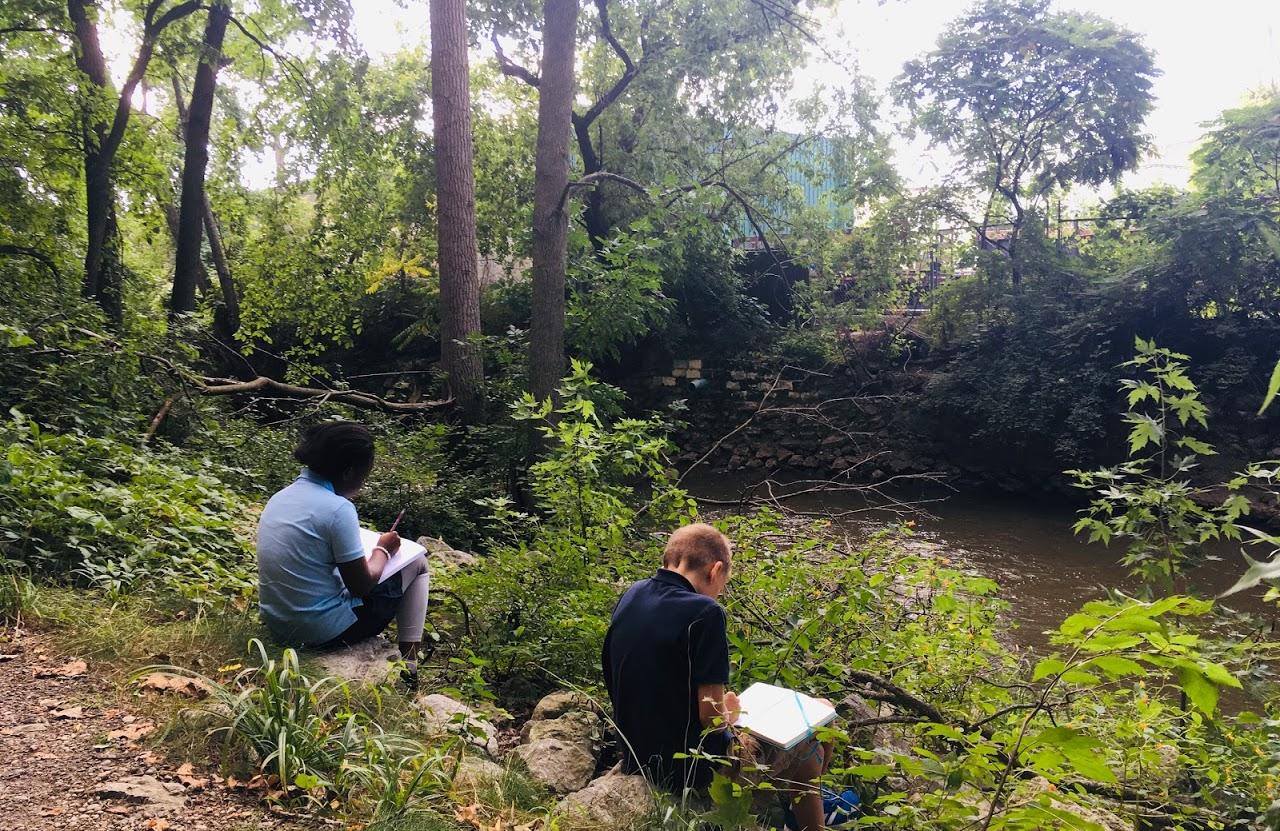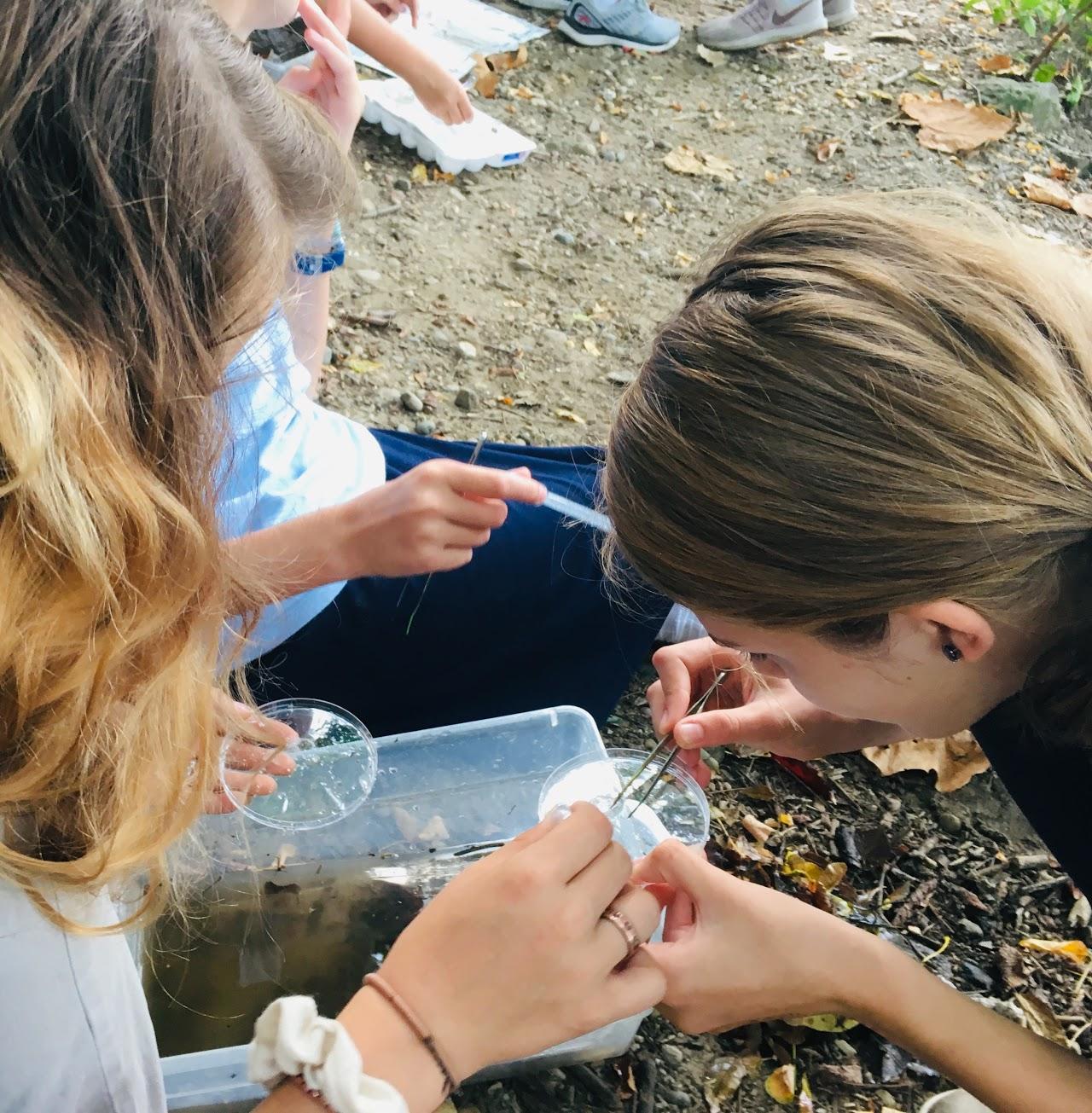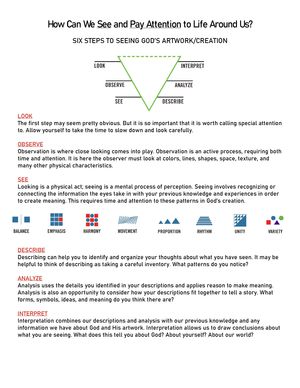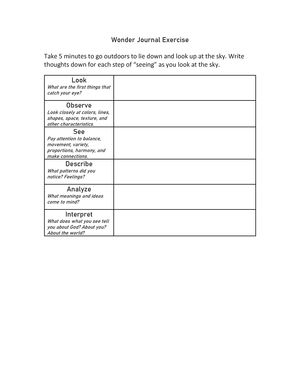“Wow, look at this. You gotta see this!” I heard these comments when my students were looking through microscopes at water samples from a local pond. They are naturally curious and typically respond to new discoveries with wonder. I love to intentionally plan my science classes to make space for meaningful reflection where students have opportunities to experience a sense of mystery, curiosity, and awe as they explore God’s brilliant creativity displayed in the universe.
It seems so obvious, but sometimes the obvious must be said: Science studies God’s creation, and in doing so tells an important part of the story of his greatness. Awe and wonder are biblically appropriate responses to what God does and has done in his universe. When we respond with awe and wonder to what we discover about creation, our hearts are shaped to serve God better in the world.
In early Elementary, students are almost instinctively moved by the beauty and intricacy of creation. Progressing through school, however, they seem to lose their ability to ask questions and freely explore. Teachers are faced with the question, “How can we intentionally create opportunities for students to continue to experience awe and wonder in the classroom?”
The desire to wonder, explore, and respond in awe is placed in us by God. To teacher Eunsub Cho, wonder is more than curiosity; it is a blend of beholding and marveling at the living and non-living parts of God’s creation. Cho works to instill a posture of wonder in his students in their science classroom. “Creation is full of these mysteries that we are invited to explore together,” Cho said. He diligently works to foster an environment that appreciates beauty, ponders mysteries, and explores things we do not yet understand.
The Potter’s House in Grand Rapids, Michigan, where Eunsub Cho is a middle school teacher, has an interdisciplinary project called the Wonder Academy. Cho worked with his colleagues to weave the concept of wonder into science, language arts, and Bible lessons. According to Cho, the key goal is “for students to learn that their faith is something they take with them into every classroom. It frames everything they do and helps them make sense of all they see. We go through a lot of different kinds of topics and they all end up at God’s creation.”
What follows are a few practices and suggestions Cho and I discussed about fostering awe and wonder in our classrooms.
Apply Project-Based Learning
A great avenue for students to become explorers is project-based learning. Teachers are challenged to move from lecture-based classes to engage the world through their senses and provide opportunities for students to ask their own investigative questions. Cho’s Wonder Class was answering the question: How do we restore the connection between people and water? While testing water quality in a local creek, Eunsub Cho’s students were challenged to also capture moments of beauty in one photo. Later they wrote a narrative describing the beauty found in the midst of the brokenness in and around a polluted stream.
Invite a Sense of Wonder through Reflective Writing
In Cho’s class, each student brings their own “Wonder Journal.” On a weekly basis, students go to their specifically chosen location in the school which they call their “Wonder spot.” The key focus is the practice and art of seeing, paying attention, slowing down, and making careful observations. How can we see God’s creation as a work of art? Reflective writing is an effective practice for developing a sense of wonder. Cho encourages his students to find moments that draw their attention to the beauty around them and moments that bring mysteries to ponder that make them reflect on verses like “This is the Lord’s doing; it is marvelous in our eyes.” (Psalm 118:23, ESV)
Create an “I Wonder” Board
In my classroom, an “I wonder” board or journal provides a place for students to ask questions and reflect and make connections to the content covered in class. At the start of each unit, I give students an opportunity to record their questions and wonderings about the new concepts we will be covering. The questions are posted on our “I wonder” board. Periodically we read and discuss, research, and answer the questions.
When we create a classroom where awe and wonder thrive and where we can slow down and use our senses, we begin to see things through our students’ eyes as together we explore God’s creation. Teachers who model wonder and awe can instill within students a lifelong passion for discovery and new learning. When studying and taking time to observe and ponder the intricacies of God’s creation, the classroom becomes a place of wonder, celebration, and gratitude. Our classroom becomes a sacred space where we can say: “Our Lord and God, you are worthy to receive glory and honor and power, because you have created all things, and by your will they exist and were created.” (Revelation 4:11, CSB)

Wonder and awe are fostered when we allow students to practice the art of paying attention and reflection.

Project-based learning is a great avenue for students to become awe-filled explorers of God’s creation.

The Art of Seeing Science
A key to developing a classroom of awe and wonder is giving students the tools to observe the beauty of God’s creation.

Wonder Journal Exercise
Creating a wonder journal helps students to describe, record, and ponder what nature is telling them about God the creator of all things.